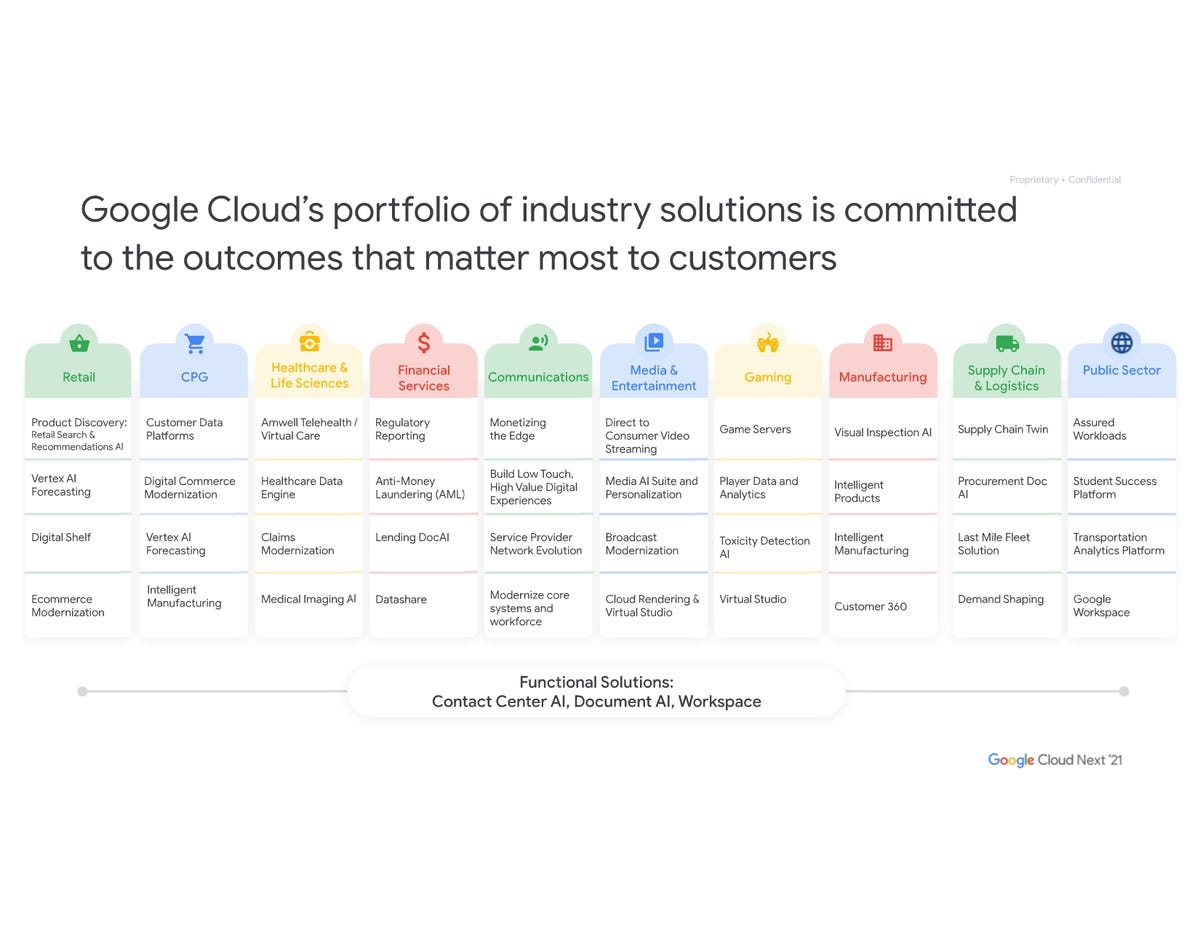![]()
Tony Baer (dbInsight)
for Big on Data
| October 18, 2021
| Topic: Big Data Analytics
With three years under his belt as CEO of Google Cloud, by now Thomas Kurian’s stamp on the organization is clear. That was one of the subthemes of last week’s Google NEXT conference.
As a cloud provider that’s had a later start than Amazon Web Services (AWS) and Microsoft Azure, it shouldn’t be surprising that Google Cloud has been on a hiring spree. But it’s notable, especially at the upper management level, that many of the recent hires have come from the ranks of established enterprise vendors. The latest is Gerrit Kazmaier, formerly of SAP, as head of Google’s Data and AI Cloud. These new faces have provided the outside-in perspective that was long missing from the Googleplex.
Not surprisingly, there’s been a subtle change in tone. Google has not necessarily abandoned the “Run like Google” messaging — something that’s always been core to the appeal of Google Cloud. “Run like Google” still comes out when Google discusses its approaches to zero-trust security, AI, and the global backbone that carries its traffic. But it’s also increasingly about meeting enterprises where they live, along with applying a touch of Google automation — such as the recently-introduced database migration service that makes lift and shift migrations of MySQL and PostgreSQL more of a pushbutton experience compared to similar services from AWS and Azure.
Even if the underlying technology is unique, such as with Cloud Spanner or the AI portfolio, Google is wrapping those services with more familiar onramps. Last week at NEXT, Google announced the preview for a PostgreSQL API to Cloud Spanner. Before this, enterprises looking to implement this service, which provides a distributed, global-scale, consistent global transaction database, had to learn a new platform. As Big on Data bro Andrew Brust covered in his data and AI roundup, Spanner now sports a PostgreSQL shell atop its unique storage engine.
Google’s adding of the PostgreSQL API is not all that unique; AWS and Azure employ this for Aurora for PostgreSQL and Azure SQL Database for PostgreSQL Hyperscale, respectively. In fact, using APIs for application-level compatibility with open source databases is becoming commonplace in the cloud. The emerging design pattern involves developing cloud-native storage engines that are canonical, then applying APIs to the make the databases look familiar, replete with the same calls and data types. AWS employs such approaches for Aurora, DocumentDB, and Keyspaces for Apache Cassandra; Azure uses this design pattern for Cosmos DB and PostgreSQL Hyperscale; Google is doing likewise for Cloud Spanner and Firestore.
Spanner provides a good example of how Google Cloud differentiates and accommodates. Underneath the hood, Spanner has architectural differences that, for instance, dispenses with capabilities such as stored procedures, requiring developers to put all the logic in the application tier. Yet with the PostgreSQL API, the data types and commands should remain familiar. Although at this point, we don’t know how much coverage of PostgreSQL’s PL/pgSQL is supported.
Google is also meeting customers where they live with its open source database partnership program that counts Confluent, DataStax, Elastic, InfluxData, MongoDB, Neo4J, and Redis. While the managed DBaaS services of most of these providers are also available on AWS and Azure, there are joint sales and support on Google. The underlying message is that you don’t have to change the relationship with your open source database provider to get support from Google Cloud. As we’ve noted in the past, we’re hoping that Google Cloud also starts extending native integrations to Cloud Dataflow, BigQuery, and Vertex AI — services that could extend these database services to end-to-end solutions akin to, for example, Azure Synapse Analytics.

Google Cloud industry solutions portfolio
Credit: Google Cloud
It shouldn’t be surprising that, with leadership that comes from the enterprise platforms space, there is increased emphasis on solutions. While Google is not unique in offering solutions, the chart above shows that the portfolio has vastly grown since the introduction of contact Center AI a couple years back.
Part of the solutions focus is bringing together synergies in the platform. This is a common challenge for each of the cloud providers, whose portfolios of services have inflated to the point of becoming practically overwhelming.
Related Topics:
Cloud
Digital Transformation
Robotics
Internet of Things
Innovation
Enterprise Software
![]()
Tony Baer (dbInsight)
for Big on Data
| October 18, 2021
| Topic: Big Data Analytics